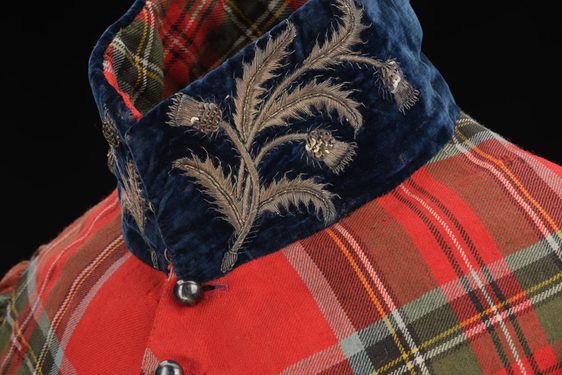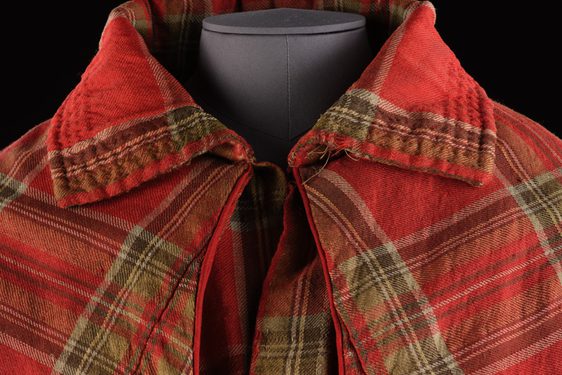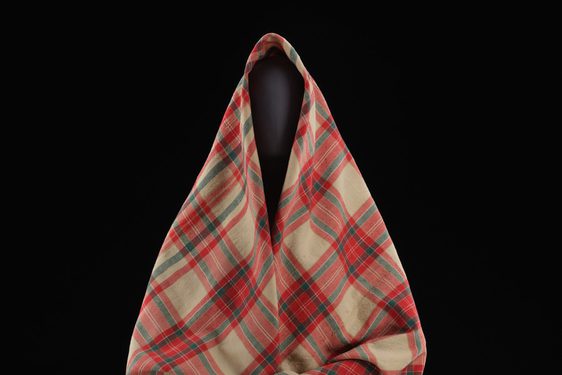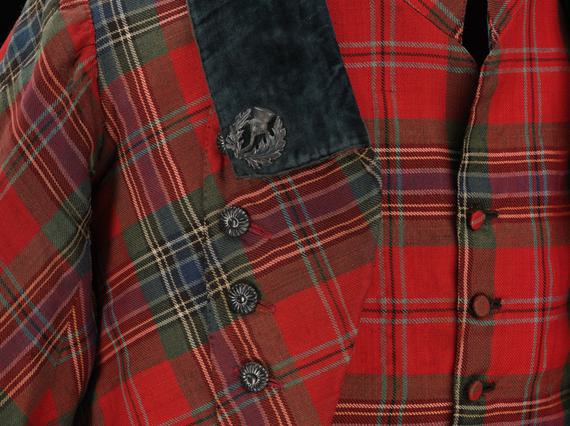
Six kilt suits from Georgian Scotland
News Story
Our collections contain a rich array of Highland dress costume and tartan fashion from the Georgian era. Discover a range of kilt suits from 1790 to 1830.
1. Kilt suit, c.1790-1800
By the close of the 18th century, the Highland dress costumes worn by Scottish gentlemen had become more tailored. The tartan used in the construction of this coat and kilt dates from the late Georgian period, when named patterns first began to appear on a commercial scale. Known variations on this pattern include Kidd, Caledonia, and Macpherson. The suit would likely have been worn with diced hose and brogues, a white linen shirt, a neckcloth, and a long silk waistcoat with a high collar.
Image gallery

Detail of coat tails of early kilt suit, c.1790-1800. Museum reference A.1988.49 A.

Rather than forming the pleats of the kilt by hand and securing the garment at the waist with a belt, tailored kilts were sewn to shape and held in place using ribbons and buttons. Kilt, c.1790-1800. Museum reference A.1988.49 B.


Kilt suit, c.1790-1800. Museum reference A.1988.49.
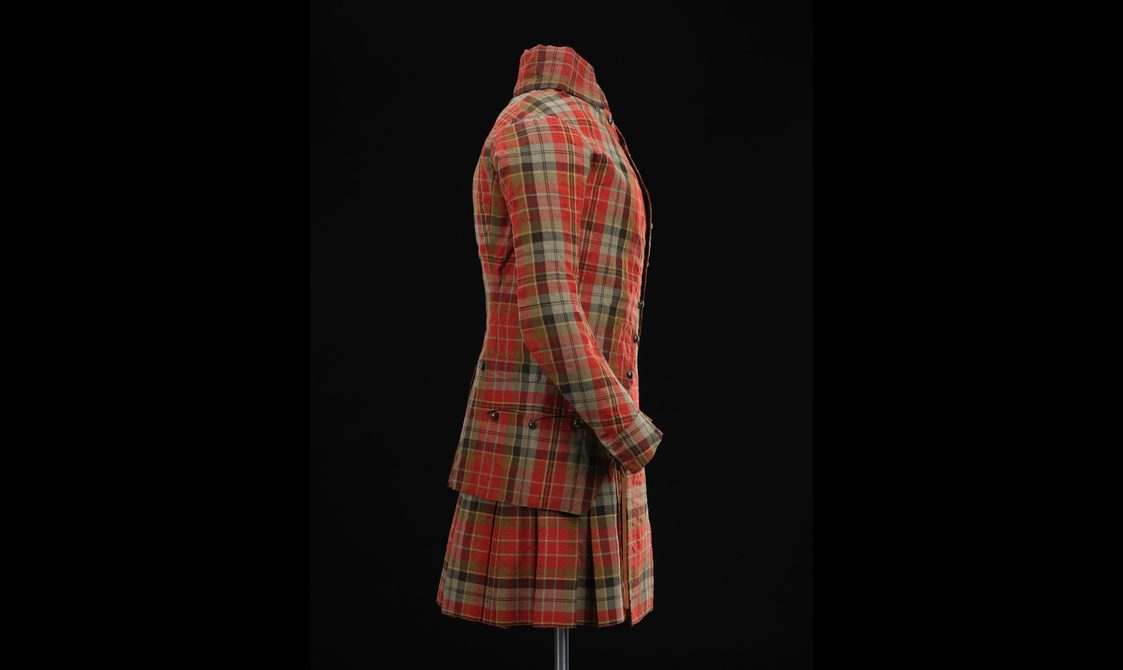
Side of Kilt suit, c.1790-1800. Museum reference A.1988.49.
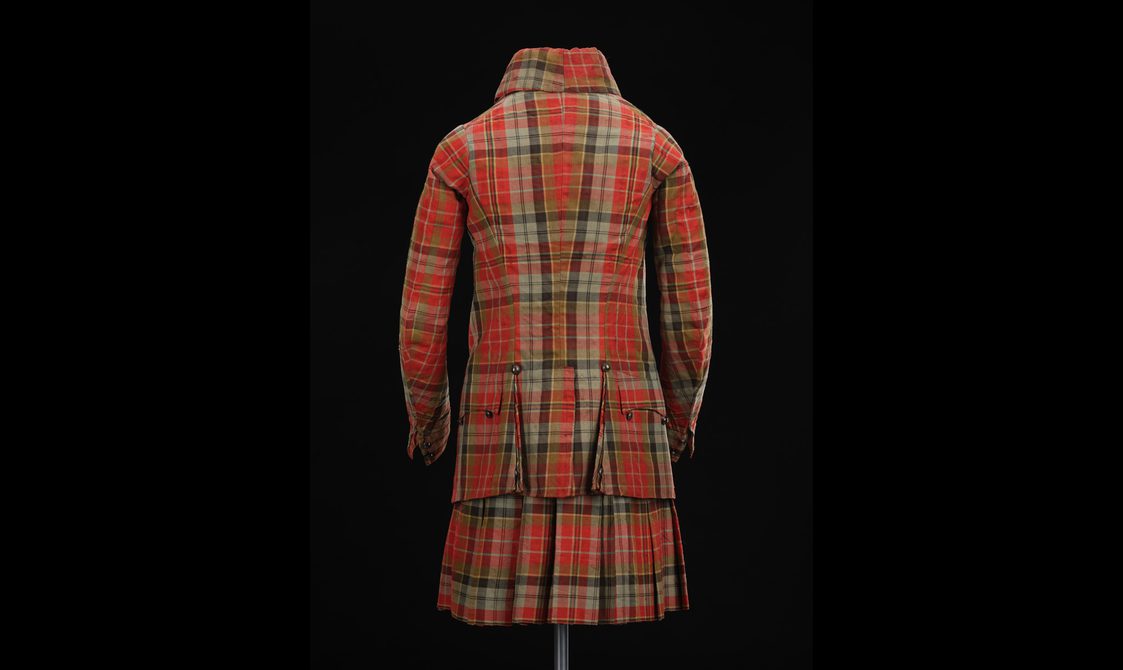
Back of kilt suit, c.1790-1800. Museum reference A.1988.49.
2. Kilt suit worn by Andrew Clark, c.1815
By the early 19th century, military style had become a strong influence on civilian fashions across Europe. The horizontal button placement and epaulettes of gold bullion ribbon seen on this kilt jacket echo aspects of regimental uniforms worn by soldiers during the Napoleonic Wars. The MacLean clan tartan used in the construction of the suit has been woven from a mixture of worsted and silk, a marker of quality.
Image gallery

Thistles were a common emblem in Highland dress tailoring during the early 19th century. They were typically added to collars, cuffs, and buttons. Detail of kilt suit, c.1815. Museum reference H.TTA 21.
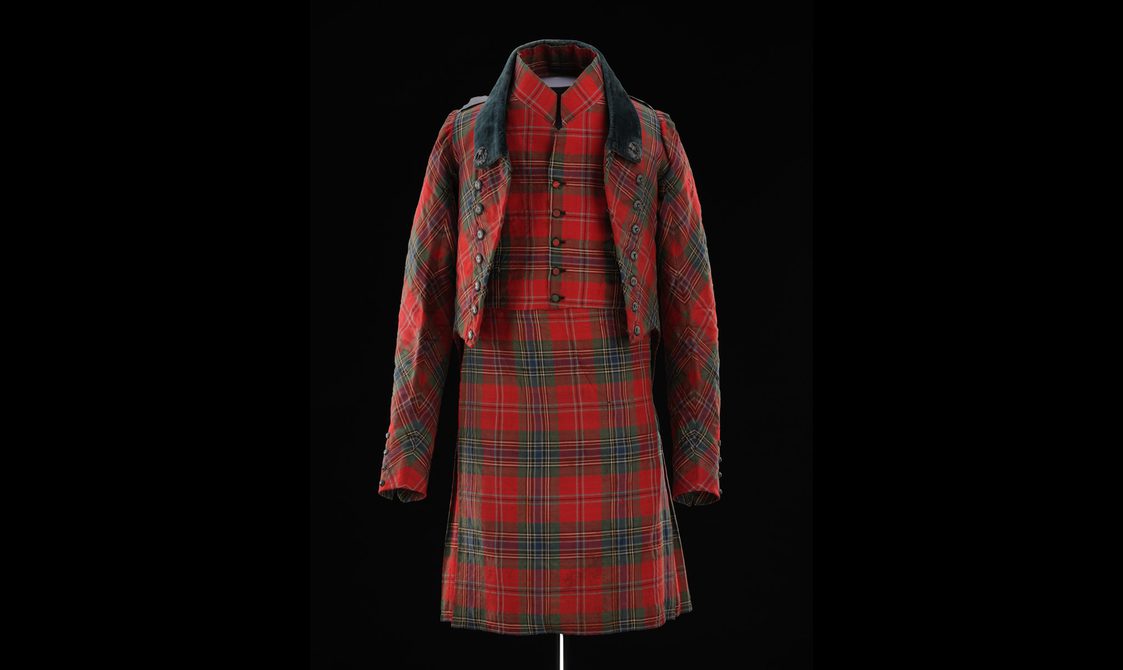
Kilt suit worn by Andrew Clark, c.1815. Museum reference H.TTA 21.

Kilt suit worn by Andrew Clark, c.1815. Museum reference H.TTA 21.

Kilt suit worn by Andrew Clark, c.1815. Museum reference H.TTA 21.

Kilt suit worn by Andrew Clark, c.1815. Museum reference H.TTA 21.

Detail of kilt suit, c.1815. Museum reference H.TTA 21.
3. Kilt suit of Mackintosh clan tartan, c.1820
In the 18th century, plaids were kilted by hand and secured by a belt. By the early 19th century a tailored alternative had emerged which successfully mimicked the appearance of a full plaid, while using comparatively little fabric. The illusion is achieved by tying the tailored plaid around the waist above the sewn kilt, drawing the excess material up onto the shoulder and securing it with a ribbon.
Image gallery

Each pleat of the kilt has been measured to the exact same width, sewn, and pressed. This creates a clean and even look. Kilt suit of Mackintosh clan tartan, c.1820. Museum reference H.TTA 20.
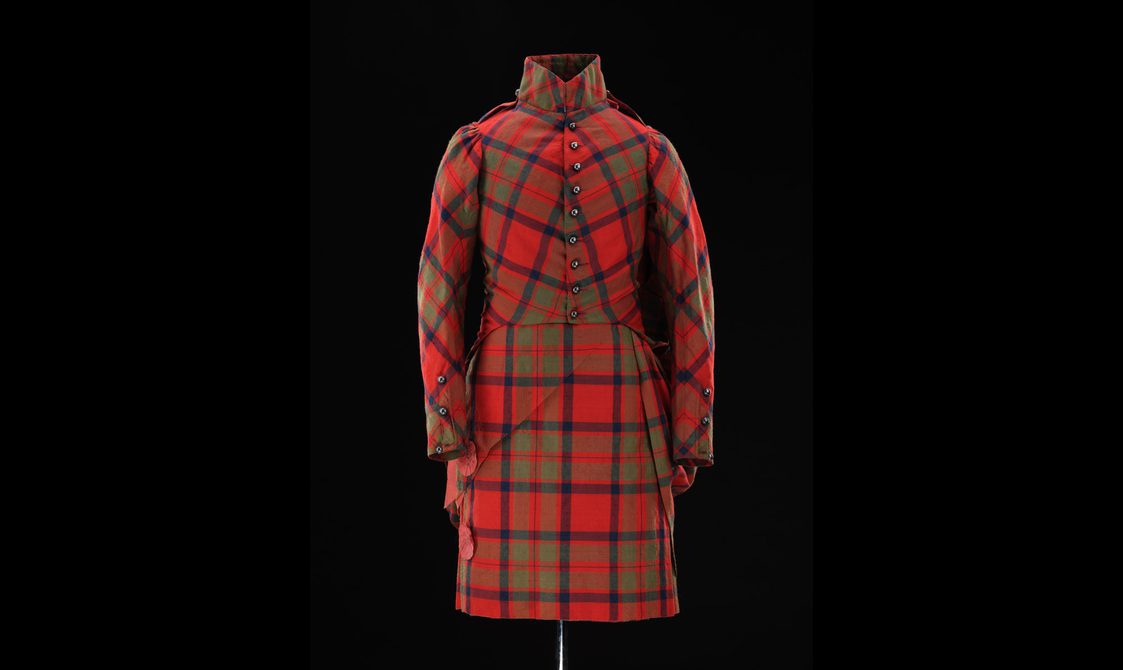
Kilt suit of Mackintosh clan tartan, c.1820. Museum reference H.TTA 20.
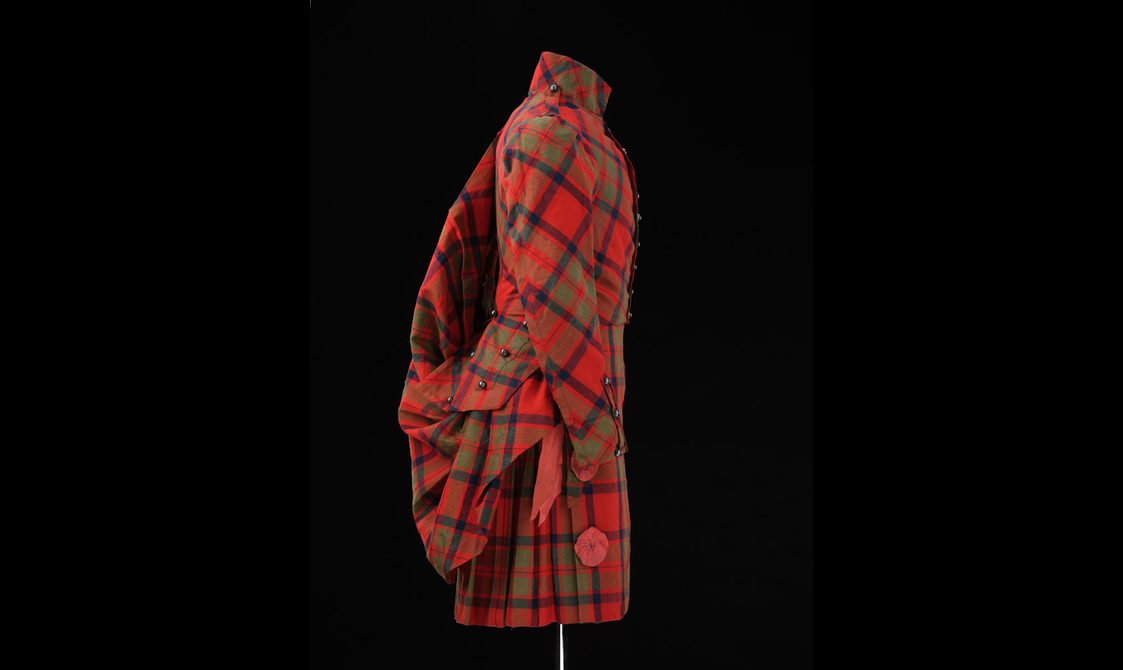
Kilt suit of Mackintosh clan tartan, c.1820. Museum reference H.TTA 20 A.

Kilt suit of Mackintosh clan tartan, c.1820. Museum reference H.TTA 20.
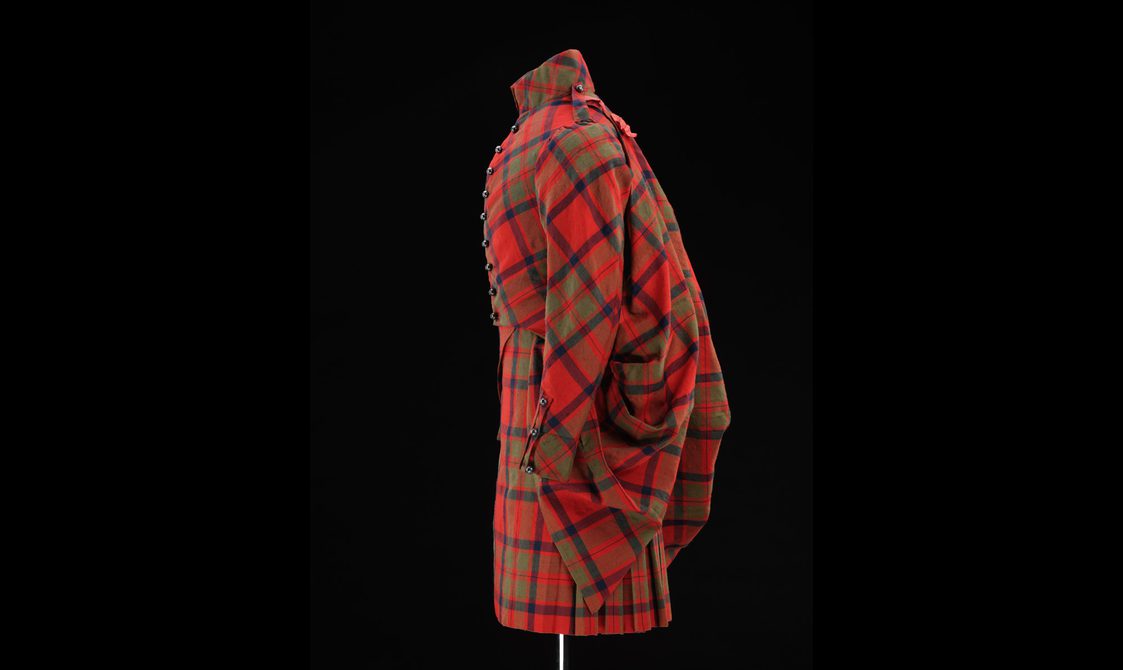
Kilt suit of Mackintosh clan tartan, c.1820. Museum reference H.TTA 20.
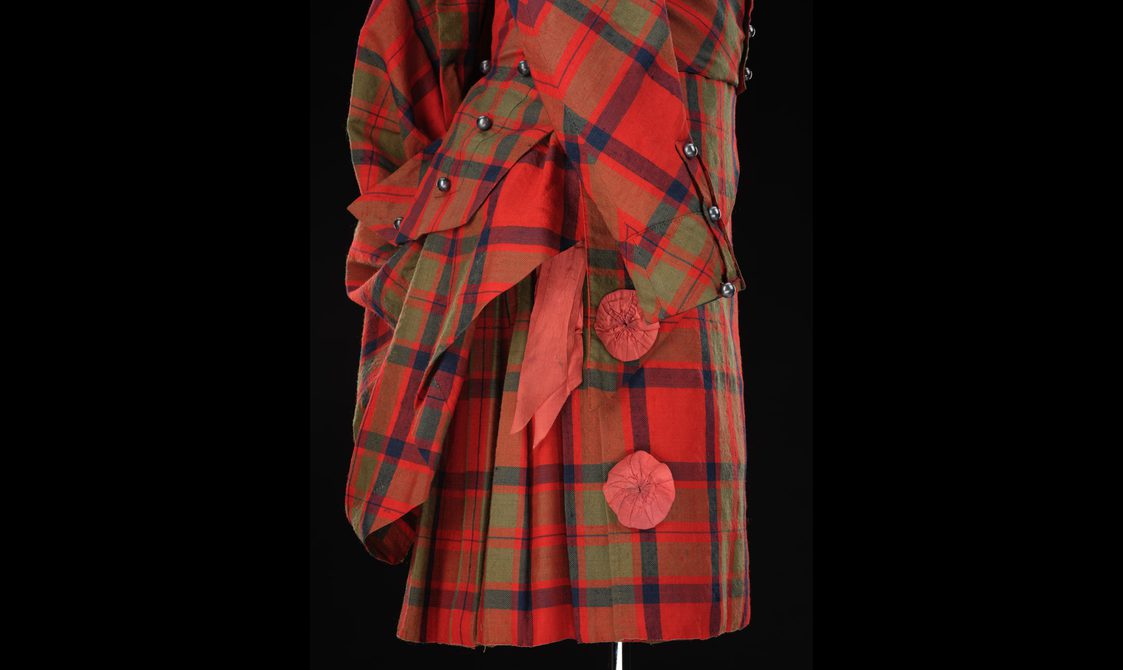
Note how the coat tails are arranged to sit atop and within the folds of the tailored plaid, thus creating more volume at the back of the outfit. Kilt suit of Mackintosh clan tartan, c.1820. Museum reference H.TTA 20.
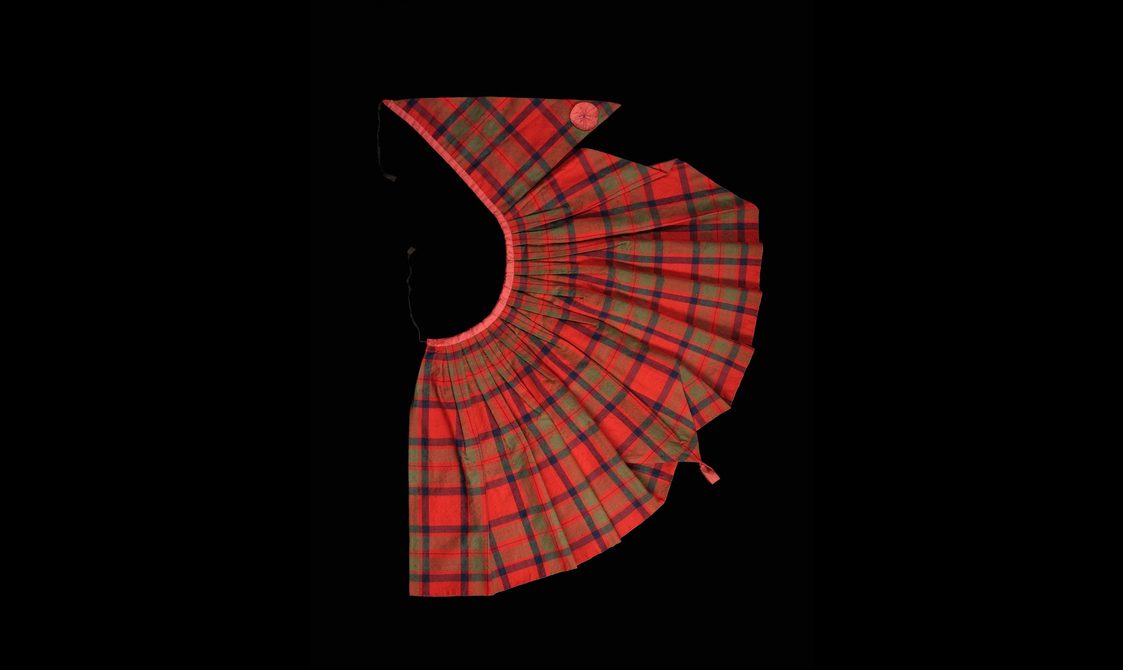
A tailored plaid is created by cutting, shaping and sewing cloth around a waistband. When worn in conjunction with a little kilt, it creates the illusion of a full belted plaid. Tailored plaid, c.1820. Museum reference H.TTA 20 C.
4. Kilt suit of MacGregor clan tartan, c.1820
The inventive manipulation of tartan patterns was a hallmark of Highland dress tailoring in the early 19th century. This kilt suit has been constructed with great skill and attention to detail. The MacGregor pattern is well-matched across the entirety of the coat, from the curved back seams to the convergence of the pattern at the front closure. Also note the evenness of the sewn kilt pleats, an emergent trend in kilt-making of the era that continues to influence how the garment is made today.
Image gallery
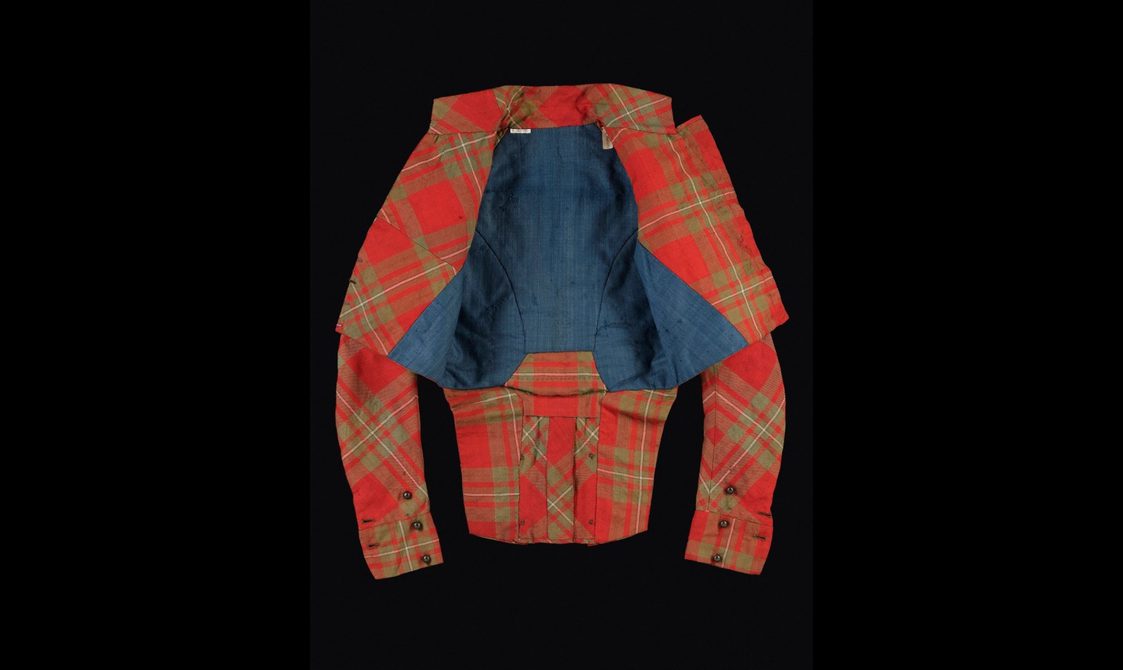
The inside of this kilt jacket is a lesson in economical tailoring. Tartan scraps left over from carefully cutting and piecing together the outside of coat have been patchworked together with blue hessian to provide a lining. Museum reference K.2002.950 A.
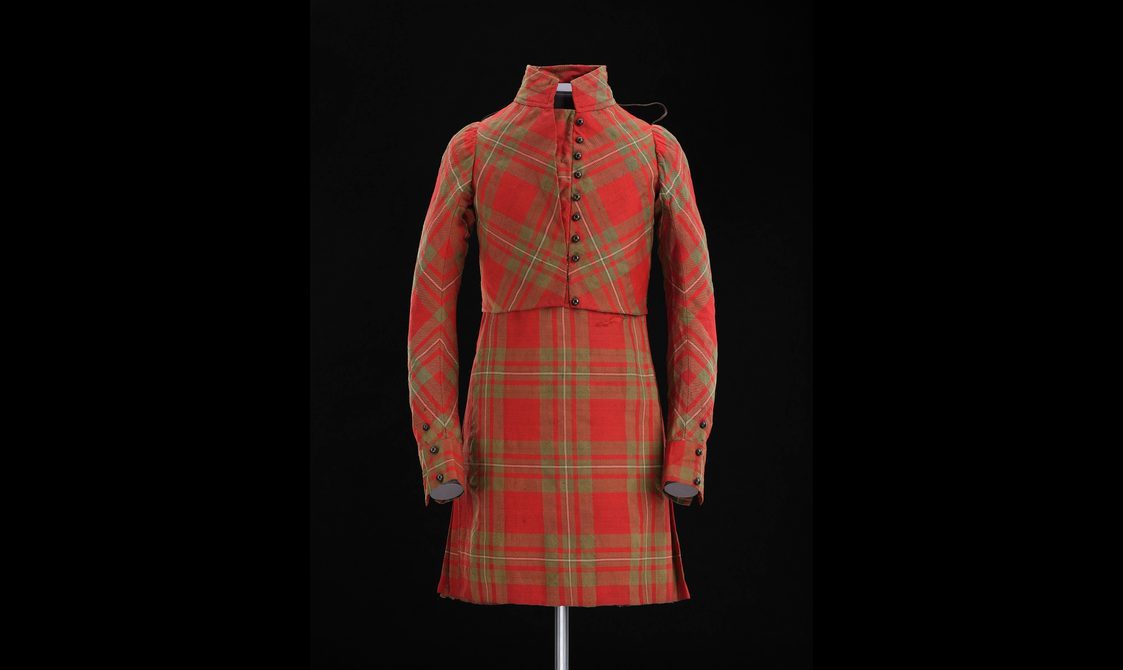
Kilt suit of MacGregor clan tartan, c.1820. Museum reference K.2002.950.
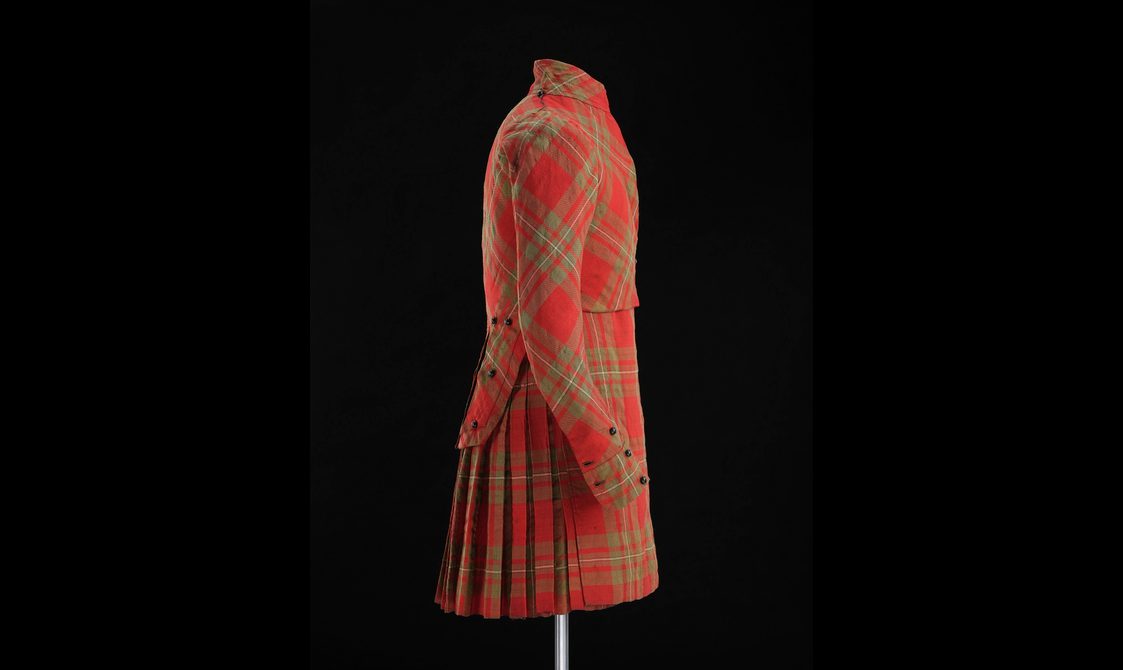
Kilt suit of MacGregor clan tartan, c.1820. Musuem reference K.2002.950.

Kilt suit of MacGregor clan tartan, c.1820. Museum reference K.2002.950.

Kilt suit of MacGregor clan tartan, c.1820. Museum reference K.2002.950.
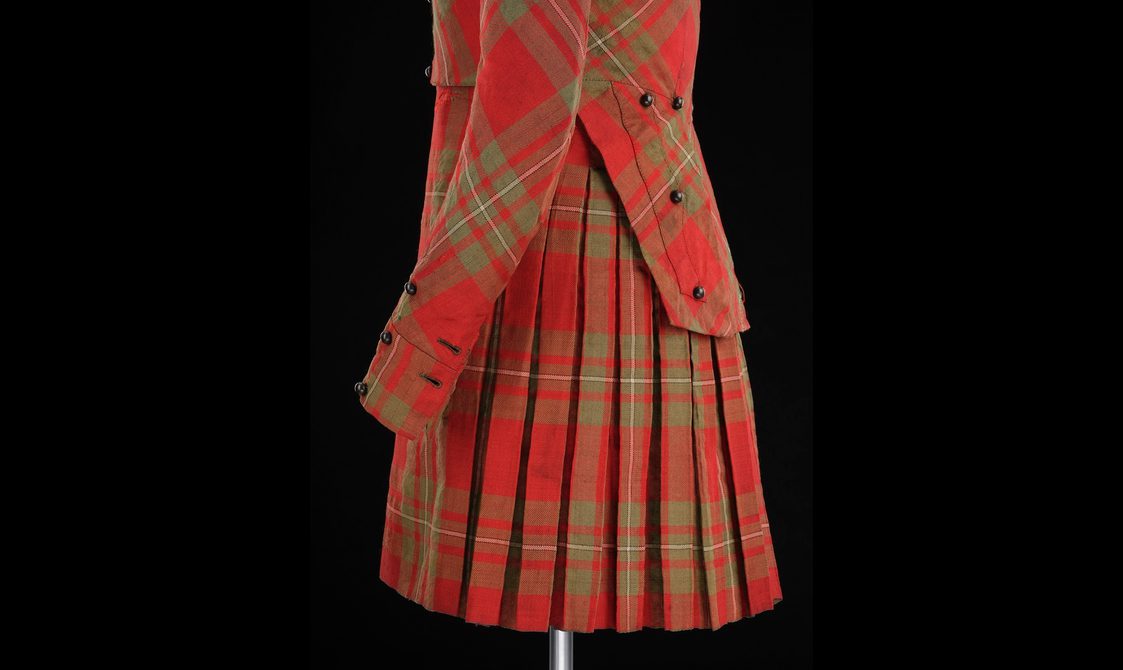
This kilt has been pleated ‘to sett’. This means that the tartan has been strategically folded and sewn in such a way that the pattern has been recreated across the back pleats of the kilt. Kilt suit of MacGregor clan tartan, c.1820. Museum reference K.2002.950.
5. Kilt suit worn by Piper Malcolm McCallum, c.1822
Malcolm McCallum was one of twenty pipers who travelled from Glen Lyon to Edinburgh in August 1822 to perform before George IV, in celebration of the monarch’s landing at Leith. According to family tradition, this was the suit of Highland dress McCallum wore on that occasion. The coat and kilt are made from Drummond tartan, while the fringed plaid is the Robertson pattern.
Image gallery

Fringed edge of tailored plaid. Kilt suit worn by Piper Malcolm McCallum, c.1822. Museum reference A.1915.212.

Domed metal buttons were a common feature of Georgian Highland dress. Their plainness did not distract from the tartan. Kilt suit worn by Piper Malcolm McCallum, c.1822. Museum reference A.1915.212.
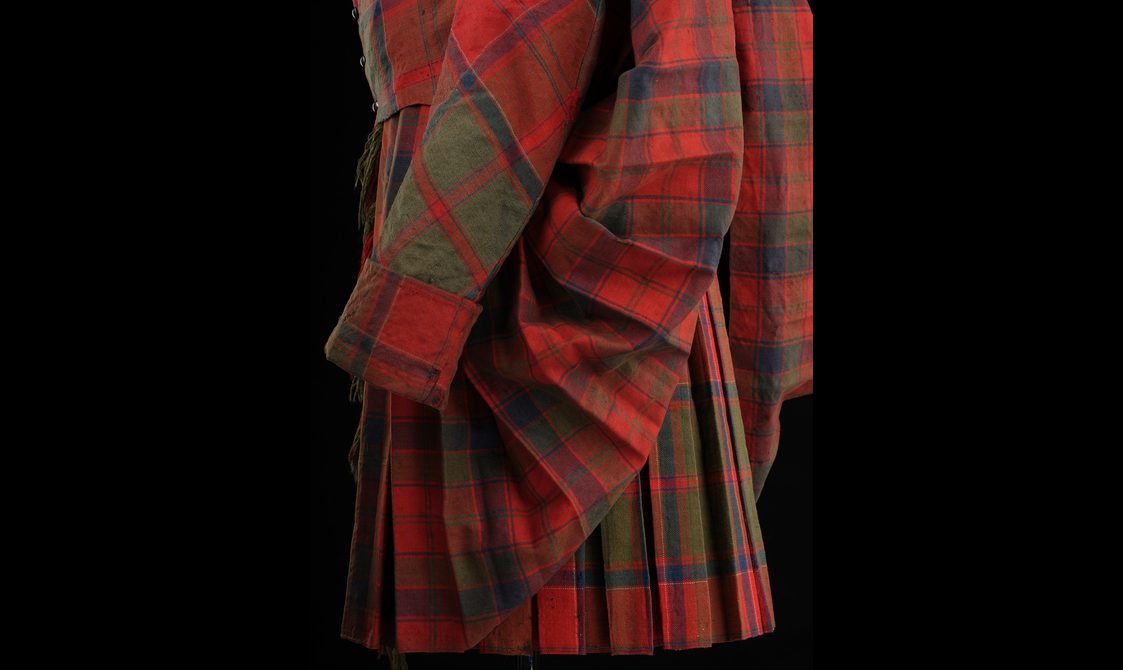
The kilt and coat of McCallum’s suit are fashioned from Drummond tartan, while the tailored plaid uses the Robertson sett. Kilt suit worn by Piper Malcolm McCallum, c.1822. Museum reference A.1915.212.

Kilt suit worn by Piper Malcolm McCallum, c.1822. Museum reference A.1915.212.

Kilt suit worn by Piper Malcolm McCallum, c.1822. Museum reference A.1915.212.

Kilt suit worn by Piper Malcolm McCallum, c.1822. Museum reference A.1915.212.

Kilt suit worn by Piper Malcolm McCallum, c.1822. Museum reference A.1915.212.
6. Kilt suit of Murray of Atholl clan tartan, c.1820-1830
Image gallery
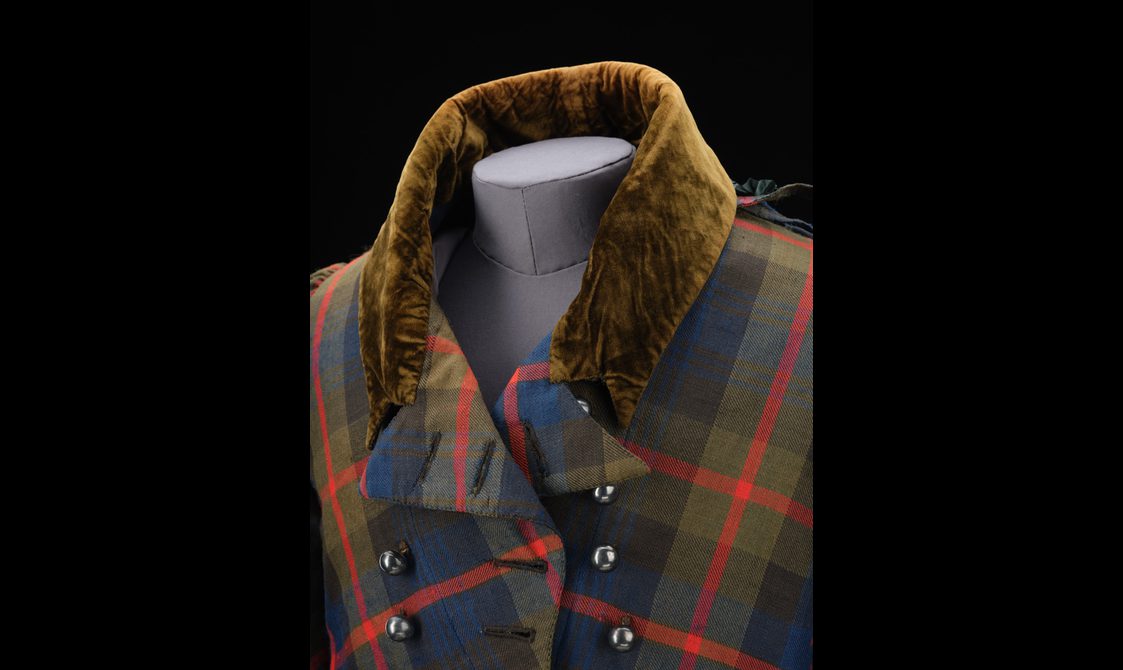
The deep collar is faced with olive green silk velvet, matching the cuffs of the coat. Kilt suit of Murray of Atholl clan tartan, c.1820-1830. Museum reference A.1993.60.
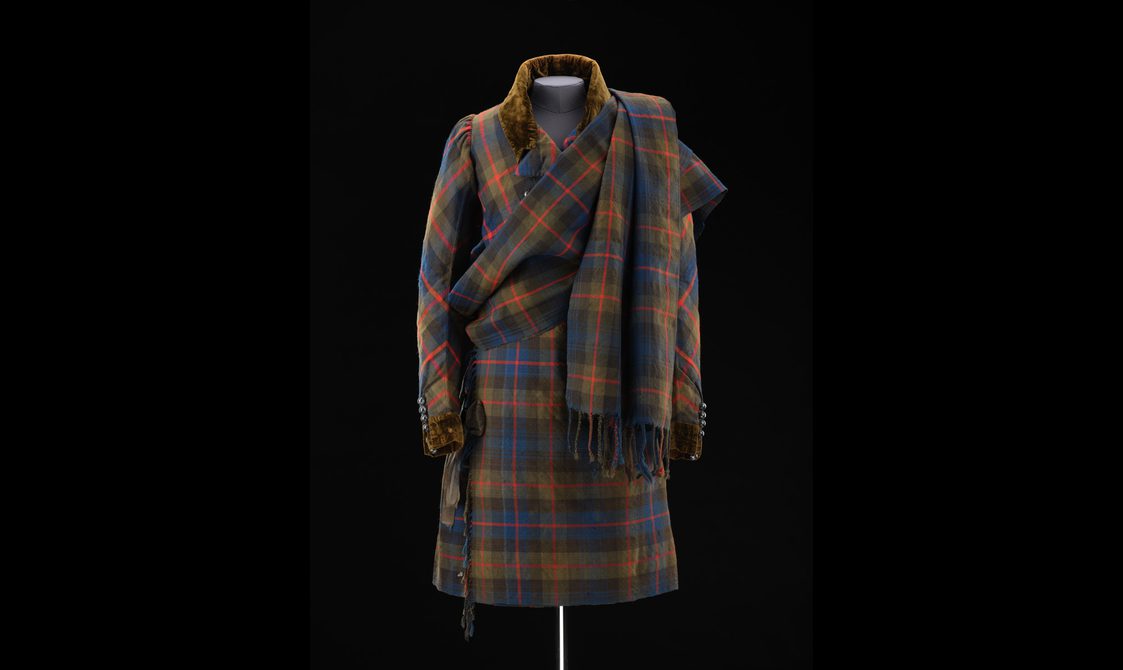
Kilt suit of Murray of Atholl clan tartan, c.1820-1830. Museum reference A.1993.60.

Kilt suit of Murray of Atholl clan tartan, c.1820-1830. Museum reference A.1993.60.
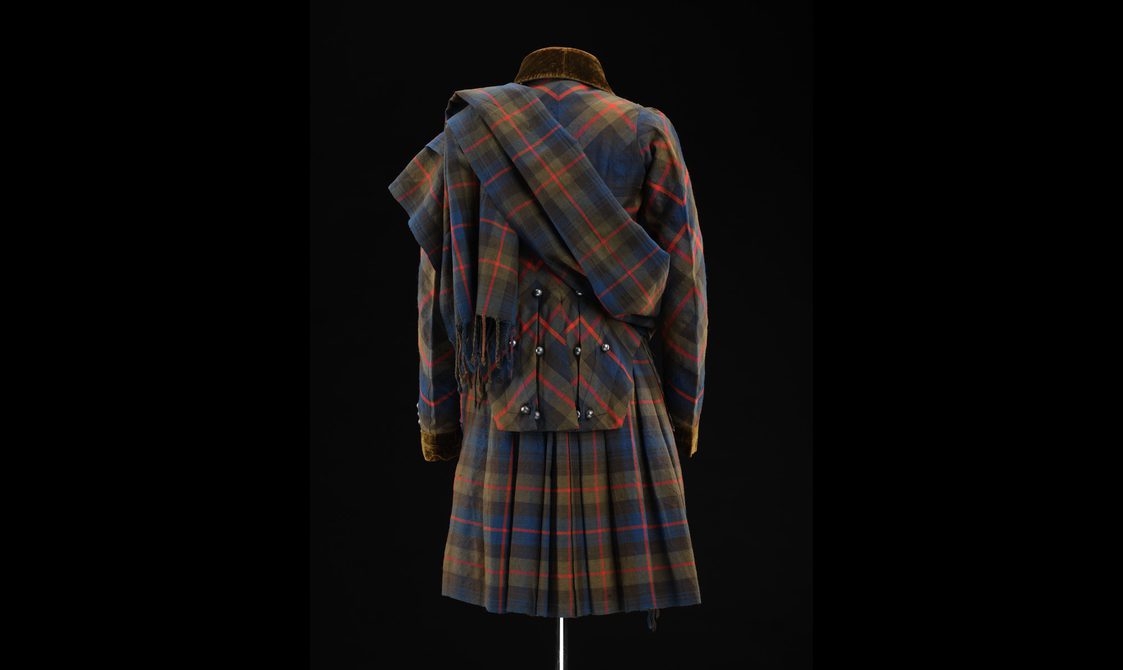
Kilt suit of Murray of Atholl clan tartan, c.1820-1830. Museum reference A.1993.60.
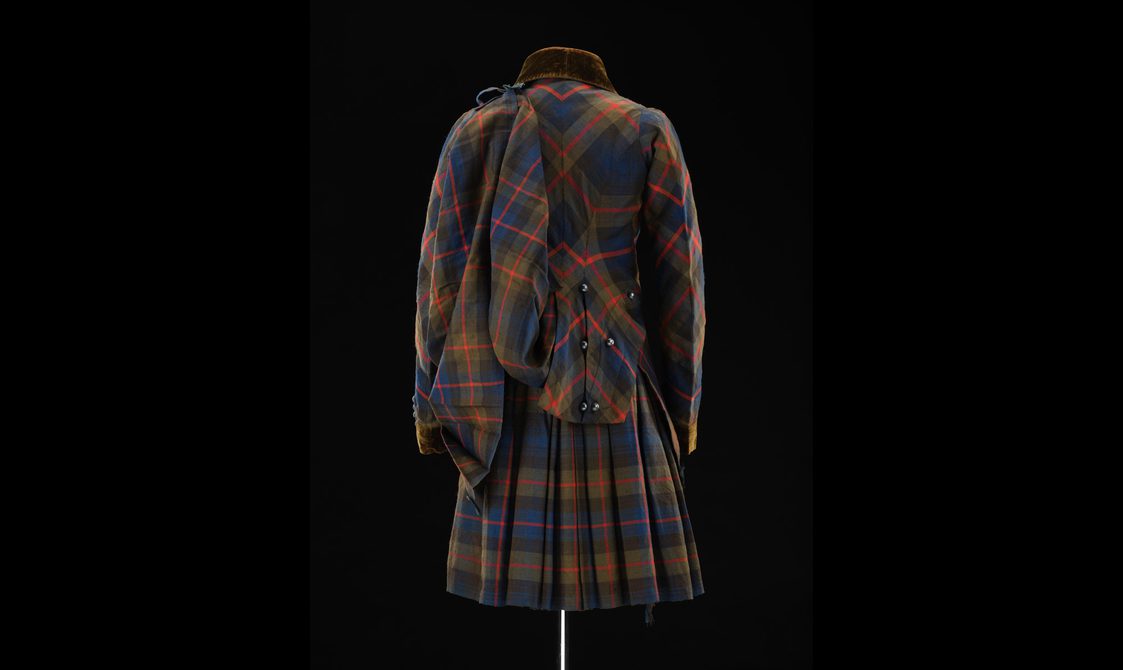
Kilt suit of Murray of Atholl clan tartan, c.1820-1830. Museum reference A.1993.60.

Kilt suit of Murray of Atholl clan tartan, c.1820-1830. Museum reference A.1993.60.
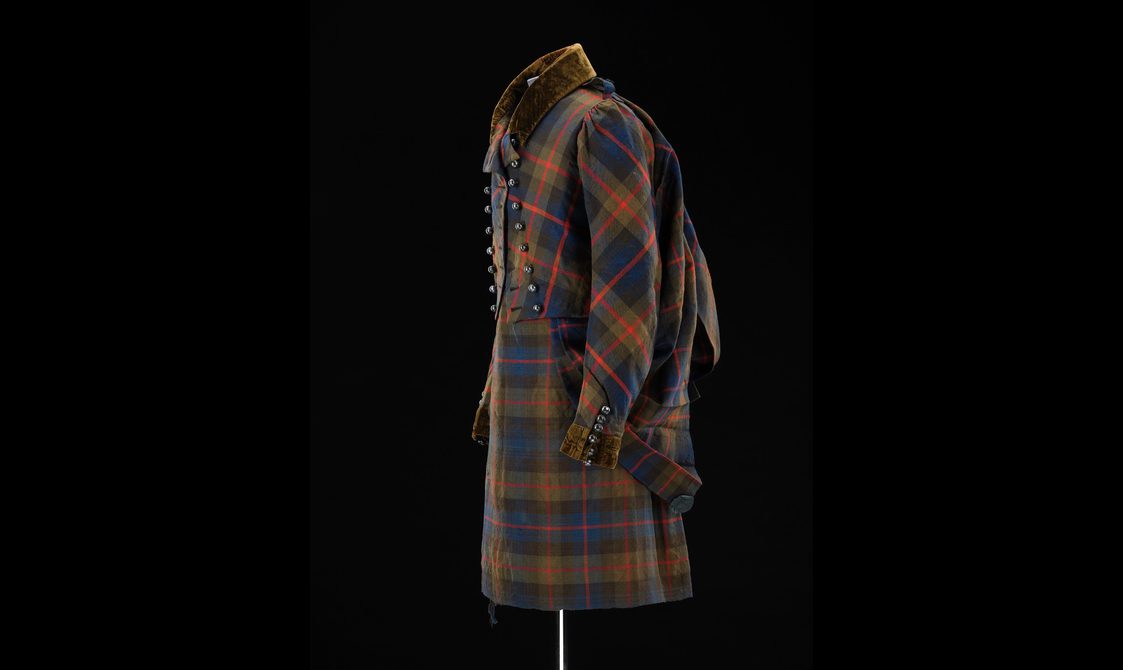
Kilt suit of Murray of Atholl clan tartan, c.1820-1830. Museum reference A.1993.60.

The cuffs of the coat are faced with olive green silk velvet and closed using a line of domed white metal buttons. Kilt suit of Murray of Atholl clan tartan, c.1820-1830. Museum reference A.1993.60.
Acquired from a sale at Fingask Castle in Perthshire, this kilt suit of Murray of Atholl tartan probably belonged to a member of the Murray Threipland family during the middle decades of the 19th century.
The deep collar and cuffs are faced with green silk velvet, while green silk rosettes adorn the front of the kilt. The coat is double-breasted, decorated with two rows of domed white metal buttons. The suit can be worn with either a light tailored plaid or a fringed shoulder plaid, allowing the wearer greater flexibility when dressing.
